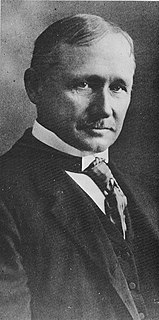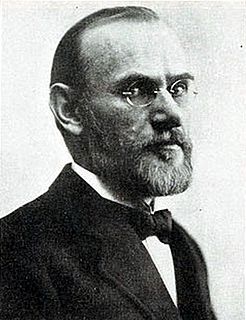| Henry Wallace Clark | |
|---|---|
 Henry W. Clark, 1959 | |
| Born | July 27, 1880 St. Louis, Missouri |
| Died | April 7, 1948 (aged 67) |
| Occupation | President |
| Employer | Wallace Clark & Co. |
Henry Wallace Clark (July 27, 1880 – April 7, 1948) was an American consulting engineer, known for popularizing the work of Henry Gantt with his 1922 work "The Gantt chart; a working tool of management". [1] [2]

Henry Laurence Gantt, A.B., M.E. was an American mechanical engineer and management consultant who is best known for his work in the development of scientific management. He created the Gantt chart in the 1910s.
Contents
- Biography
- Youth and early career
- Further career
- Work
- Scientific management
- Woodward & Tiernan Printing Company Building
- Studies in Europe
- Implementation of the Gantt chart in Europe and Britain
- Publications
- References
- Further reading
- External links
In 1934 he was awarded the Henry Laurence Gantt Medal by the ASME. [3] A year after his death the Wallace Clark Award was initiated, an award for distinguished contribution to scientific management in the international field.
The Henry Laurence Gantt Medal was established in 1929 by the American Management Association and the Management section of the American Society of Mechanical Engineers for "distinguished achievement in management and service to the community" in honour of Henry Laurence Gantt. By the year 1984 in total 45 medals had been awarded.

The American Society of Mechanical Engineers (ASME) is an American professional association that, in its own words, "promotes the art, science, and practice of multidisciplinary engineering and allied sciences around the globe" via "continuing education, training and professional development, codes and standards, research, conferences and publications, government relations, and other forms of outreach." ASME is thus an engineering society, a standards organization, a research and development organization, an advocacy organization, a provider of training and education, and a nonprofit organization. Founded as an engineering society focused on mechanical engineering in North America, ASME is today multidisciplinary and global.
The Wallace Clark Award or Wallace Clark Medal is a former management award for Distinguished Contribution to Scientific Management, named after Henry Wallace Clark (1880-1948). The Wallace Clark Award was established in 1949 and was sponsored by the American Management Association (AMA), the American Society of Mechanical Engineers (ASME), the Association for Consulting Management Engineers and the Society for the Advancement of Management.












